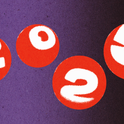Possibly the least contentious financial prediction one can make for 2017 is that inflation in the UK will go up. The consensus among economists is that it will reach at least 3 per cent sometime next year and some think 4 per cent more likely. This, of course, is thanks to the drop in sterling’s value against most other currencies since the European Union referendum, which has made our imports more expensive to buy with enfeebled pounds and pence.
The only prediction I can offer with even greater confidence is that in the absence of overwhelming necessity, interest rates will not go up in order to curb the price increases that everyone—and certainly every Marmite-lover—is now expecting. Actually, this isn’t even a prediction. Mark Carney, the Governor of the Bank of England, has made it clear that not only will inflation breach the Bank’s 2 per cent target rate but that when it does, the Bank is unlikely do anything about it.
For some years now, inflation has been dormant. Following a two-year period of accelerating price rises that ended in late 2011, the headline rate turned down and spent much of 2015 bobbing around zero. For the past year or so it’s been edging back upwards and we will now see that trend gather momentum.
Does any of this matter? After all, inflation is always either waxing or waning, often for reasons that are at least partly obscure, and life carries on regardless. However, the thing that strikes me about this upswing is how much worse it will look for savers than the last one. Back in late 2011, when inflation had recently peaked at about 5 per cent, the best instant access savings accounts were paying around 3.1 per cent, although that included a one-year initial bonus worth about 1.1 per cent. Today, the best instant access accounts are paying about 1 per cent.
Let’s assume, optimistically, that the economists’ best guesses are correct and inflation peaks sometime next year at 3 per cent, and let’s also assume that instant access savings rates stick at about 1 per cent. In that case, the gap between the return on savings and the rate of inflation will be about -2 per cent—in effect, our savings will fall in value at 2 per cent a year after inflation for as long as that situation persists.
In late 2011, you could get about 3 per cent a year on your savings and inflation was 5 per cent. The gap between them was the same, at about -2 per cent a year. So as long as inflation goes no higher than 3 per cent you could argue that savers will be no worse off this time than they were the last time inflation peaked. You could argue they will be better off since interest on savings is now paid without any deduction for tax.
But that’s not how the vast majority of people will view the situation. They will see those razor-thin savings rates and conclude that any remaining incentive to save has been snuffed out so why bother? Once the incentive to behave a certain way is removed, the question of whether you keep going becomes one of conviction alone. Some rather esoteric calculations may reassure a few people that they are no worse off than the last time inflation peaked, but to many more, a 1 per cent savings rate sends out the opposite message much more forcefully.

DIY investor: Losing interest
"Inflation will breach the Bank's 2 per cent target rate but when it does the Bank is unlikely to do anything about it"
November 17, 2016












